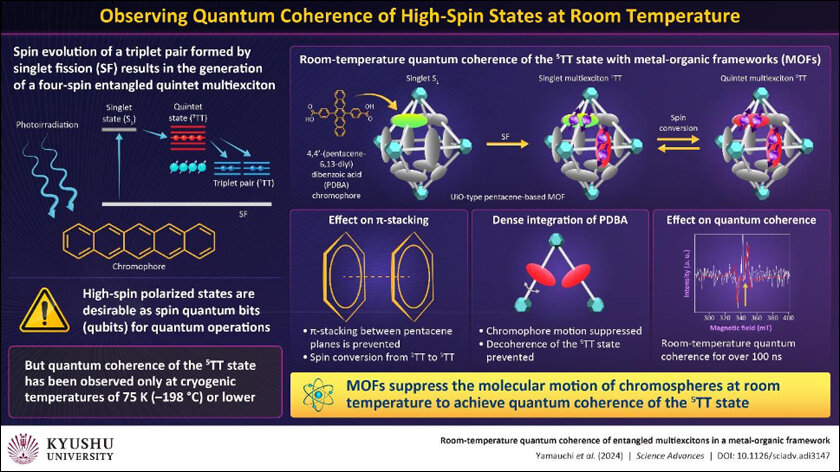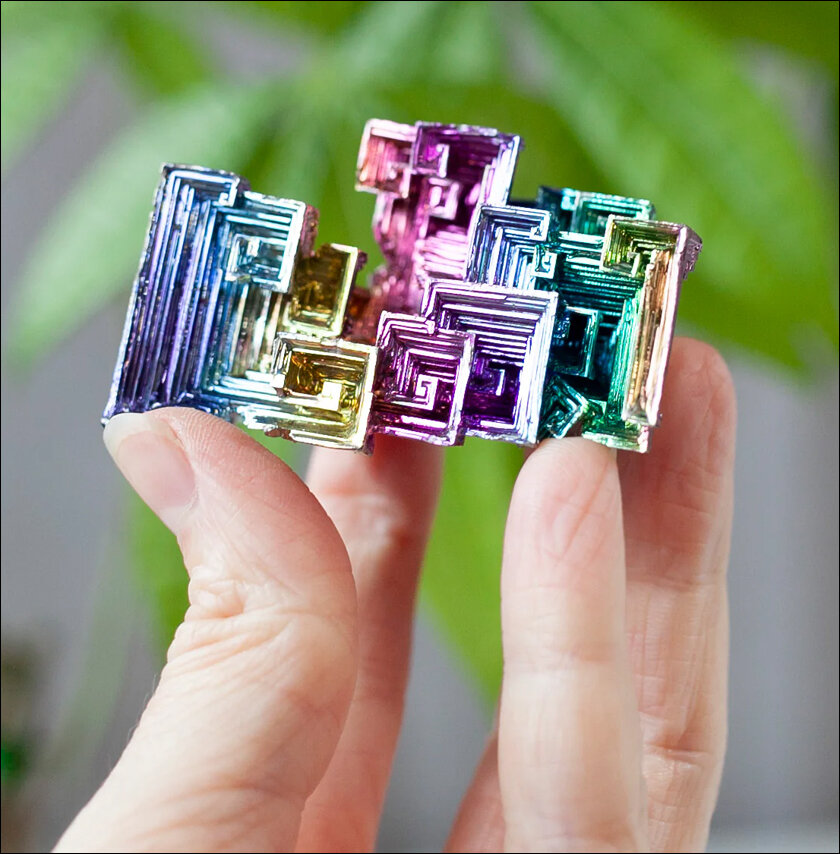While there’s really nothing like the quantum world to make you feel unintelligent, it’s good to know that there are scientists around the world to whom this stuff makes sense.
Quantum physics is hard to understand, harder to explain, and much easier to define as “just magic.” That being said, the world of quantum computers is on the brink of making a lot of that magic a reality, at room temperature. While binary bits are the base units of traditional computation and they can be 1s and 0s, qubits can be 1s, 0s, or a combination of both which opens up to that magical world of computational possibilities. The problem, however, is for qubits to achieve “quantum coherence” (which is the state we want them in, to make the quantum magic work), they need to be kept at sub-freezing temperatures. The reason behind this is that qubits tend to lose their quantum properties when in contact with the environment, especially radiation.

(Image Credit: Nobuhiro Yanai / Kyushu University)
Stable qubits at room temperature
This is why quantum computers are typically kept at minus 273 degrees Celsius and also why the chances of one day having a quantum computer that operates at room temperature are pretty slim. That being said, however, a team of Japanese researchers at Kyushu University have built a qubit that can achieve quantum coherence at room temperature. While the experiment only lasted 100 nanoseconds, this is the first time quantum coherence of four electrons in a “quintet state” has been observed at room temperature and is a significant milestone. In quantum mechanics, you have a singlet, doublet, triplet, and quintet state of electrons based on the number of pairs and the direction of the spin. A quintet state has four pairs of electrons spinning in parallel and in opposite directions of each other.
While there have been several previous attempts to achieve quantum coherence at room temperature, the problem has always been the system’s susceptibility to environmental conditions like radiation which make the electrons move around erratically. To negate the effects of external factors, the Japanese team led by Nobuhiro Yanai, an associate professor at Kyushu University, used pentacene molecules combined with a metal-organic framework (MOF) that restricts the movement of electrons under the effects of radiation. The MOF is made of pentacene molecules, zirconium ions, and organic dicarboxylate ligands. While the MOF doesn’t restrict the qubits (pentacene molecules in this case) movement completely, it restricts them to a constrained angle which is enough to trap them in a quantum state long enough to be observed for the first time.

Quantum plastics
In another major breakthrough, Researchers from the University of Salerno and the Helmholtz-Zentrum Dresden-Rossendorf (HZDR) in Italy have discovered that thin films of elemental bismuth display the non-linear Hall effect at room temperature. The non-linear Hall effect is a quantum transportation phenomenon and derives its quantum nature from something called the Berry curvature dipole. While Hall voltage is linearly related to the current created by a magnetic field, the Non-linear Hall effect creates the same potential difference across an electric circuit using a crystalline arrangement of materials, without the need for a magnetic field or a linear relationship between the voltage and the current. The short version, however, is that quantum effects (Non-linear Hall effect) can be observed on thin strips of elemental Bismuth at room temperature.
These strips can be attached to plastic or silicon substrates and can then be used in electronic devices to transmit terahertz high-frequency signals. Now while the Non-linear Hall effect had already been observed in materials before (like Graphene) it was never observed at room temperature. Much like the quantum qubits we discussed earlier, Graphene has to be cooled down to minus 70 degrees Celsius with the help of liquid Nitrogen in order for it to display the Non-linear Hall effect. Bismuth, on the other hand, not only displays quantum effects but can also be geometrically shaped in order to control the flow of electrons at room temperature. This makes it an ideal candidate to create new kinds of components for the high-speed and high-frequency circuits of the future

Magic
In conclusion, while there’s really nothing like the quantum world to make you feel unintelligent, it’s good to know that there are scientists around the world to whom this stuff makes sense. As we already mentioned, the easy way to describe this world would be “just magic” and you would be pretty justified in doing so. It’s also fun to try and understand the limiting factors or the problems scientists face as this adds context to the importance of each breakthrough even if that breakthrough lasts for just 100 nanoseconds. That’s a billionth of a second, and while that may sound insignificant, when you think of the scientists who spend years of their lives and sometimes their entire lives to create actual magic for a billionth of a second, it doesn’t seem insignificant at all.
In case you missed:
- From Fridge to Fusion Reactor, How Mayonnaise is Facilitating Nuclear Fusion
- Could Dimming the Sun Be the Solution to Global Warming?
- Age reversal technologies in 2024, longevity escape velocity by 2029?
- Could Contact Lenses be the Key to Fully Wearable BCIs?
- Scientists establish two-way Lucid Dream communication!
- This computer uses human brain cells and runs on Dopamine!
- Scientists gave a mushroom robotic legs and the results may frighten you
- DeepSeek’s AI Revolution: Creating an Entire AI Ecosystem
- Omnidirectional VR treadmills, go anywhere without going anywhere!
- These AI powered devices add smells to virtual worlds









